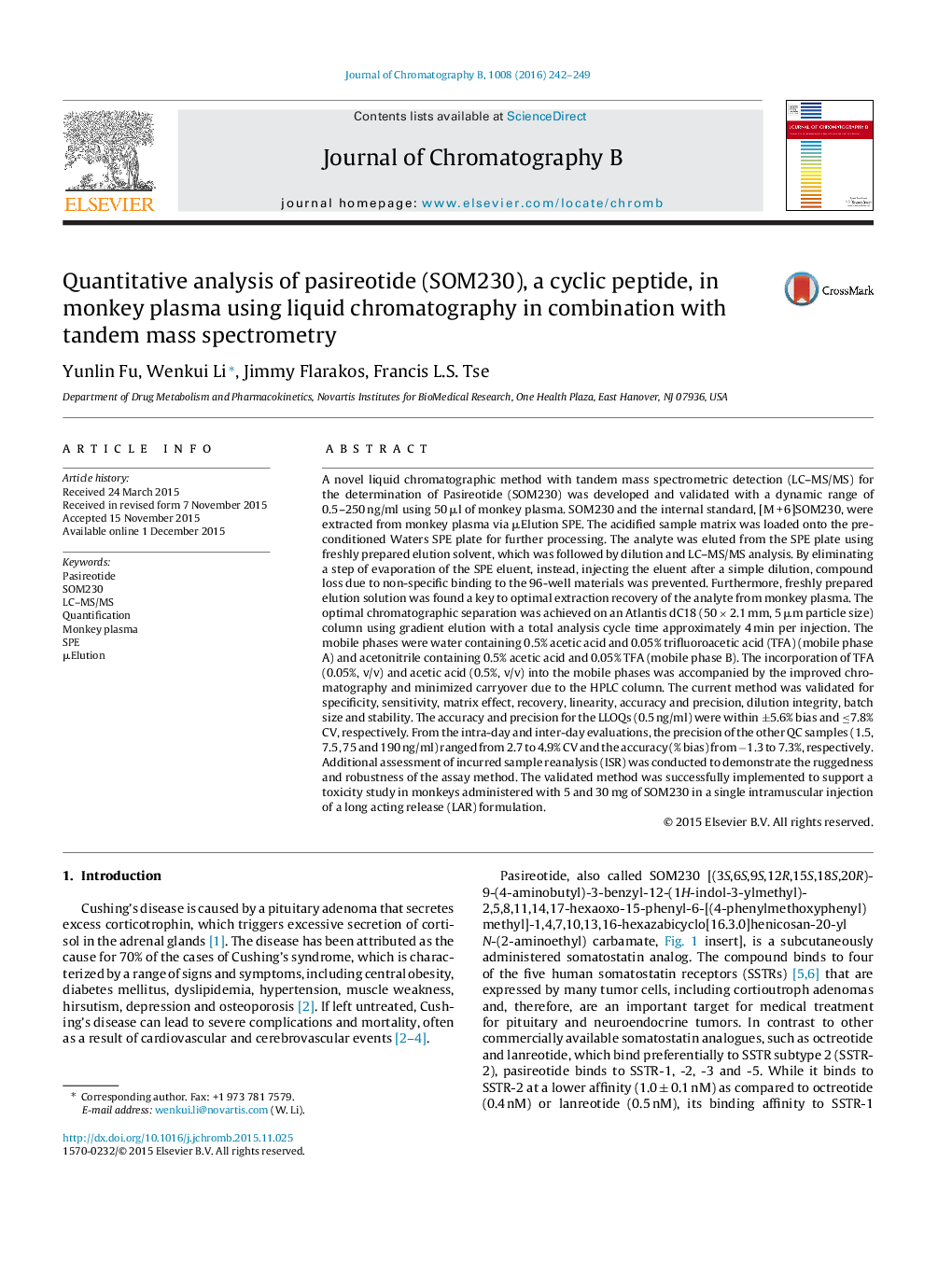| Article ID | Journal | Published Year | Pages | File Type |
|---|---|---|---|---|
| 1214845 | Journal of Chromatography B | 2016 | 8 Pages |
•An LC–MS/MS method was developed and validated for the quantification of SOM230.•Adding TFA to the mobile phases improved the chromatography and assay carryover.•The SPE elution solvent needed to be freshly prepared for optimal LC–MS/MS results.•Direct injection of SPE extract after dilution minimized nonspecific binding impact.•The validated method was successfully used in a TOX study for SOM230 in monkeys.
A novel liquid chromatographic method with tandem mass spectrometric detection (LC–MS/MS) for the determination of Pasireotide (SOM230) was developed and validated with a dynamic range of 0.5–250 ng/ml using 50 μl of monkey plasma. SOM230 and the internal standard, [M + 6]SOM230, were extracted from monkey plasma via μElution SPE. The acidified sample matrix was loaded onto the preconditioned Waters SPE plate for further processing. The analyte was eluted from the SPE plate using freshly prepared elution solvent, which was followed by dilution and LC–MS/MS analysis. By eliminating a step of evaporation of the SPE eluent, instead, injecting the eluent after a simple dilution, compound loss due to non-specific binding to the 96-well materials was prevented. Furthermore, freshly prepared elution solution was found a key to optimal extraction recovery of the analyte from monkey plasma. The optimal chromatographic separation was achieved on an Atlantis dC18 (50 × 2.1 mm, 5 μm particle size) column using gradient elution with a total analysis cycle time approximately 4 min per injection. The mobile phases were water containing 0.5% acetic acid and 0.05% trifluoroacetic acid (TFA) (mobile phase A) and acetonitrile containing 0.5% acetic acid and 0.05% TFA (mobile phase B). The incorporation of TFA (0.05%, v/v) and acetic acid (0.5%, v/v) into the mobile phases was accompanied by the improved chromatography and minimized carryover due to the HPLC column. The current method was validated for specificity, sensitivity, matrix effect, recovery, linearity, accuracy and precision, dilution integrity, batch size and stability. The accuracy and precision for the LLOQs (0.5 ng/ml) were within ±5.6% bias and ≤7.8% CV, respectively. From the intra-day and inter-day evaluations, the precision of the other QC samples (1.5, 7.5, 75 and 190 ng/ml) ranged from 2.7 to 4.9% CV and the accuracy (% bias) from −1.3 to 7.3%, respectively. Additional assessment of incurred sample reanalysis (ISR) was conducted to demonstrate the ruggedness and robustness of the assay method. The validated method was successfully implemented to support a toxicity study in monkeys administered with 5 and 30 mg of SOM230 in a single intramuscular injection of a long acting release (LAR) formulation.
